Lab Members
Principal Investigator

Adam Kaufman
In our lab, we investigate how to apply the tools of atomic, molecular, and optical physics to the microscopic study of quantum systems. We are interested in fundamental questions, such as, “how does classical physics –- such as statistical mechanics --- emerge from the collective behavior of quantum mechanical systems?” We also ask applied questions, for instance, “Can we develop new tools for the manipulation of individual particles, such as ions or molecules, whose interactions and internal degrees of freedom establish new prospects?” For such studies, we aim to marry the tools of quantum gas microscopy, optical tweezer technology, and high precision spectroscopy, in order to gain single-particle control at fundamental length scales and very small energy scales.
Research Associate
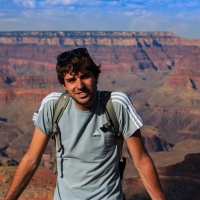
Matteo Marinelli
Matteo joined the group in April 2022. He completed his Ph.D. thesis in the group of Jonathan Home at ETH Zurich, where he investigated the use of mixed-species chains of trapped ions to perform proof-of-principle experiments of quantum error correction and quantum computation. After his Ph.D., he worked at the newly founded ETH-PSI Quantum Computing Hub as the trapped-ion experimental lead scientist, where he conceived and led the construction of the first experimental setup. In the Kaufman lab, in collaboration with the Regal group, Matteo is excited to help construct the cryogenic Rydberg atom array experiment and explore new techniques quantum information processing.
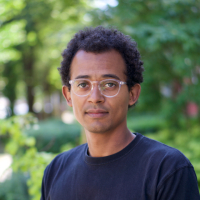
Nelson Darkwah Oppong
Nelson joined the lab in September 2022 as a Humboldt postdoctoral fellow. He obtained his Ph.D. from the Bloch group at LMU in Munich, where he worked on ultracold ytterbium quantum gases in optical lattices. For his thesis work, he explored how the clock state of ytterbium can be employed for the simulation of interesting multiorbital models from solid-state physics. Now, at JILA, Nelson is excited to explore how programmable interactions in Strontium tweezer arrays can be utilized for quantum-enhanced metrology in collaboration with the Ye group, and, how such systems can be used for probing Hubbard physics at the single-particle level.
Graduate Student
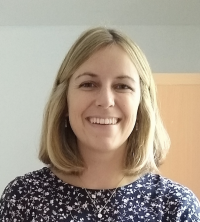
Jamie Boyd
Jamie joined the group after completing undergraduate degrees in Physics and French at the University of Oklahoma. As an undergrad, she explored several areas of research, from particle physics to accelerator design to plasma physics, before discovering atomic physics, which captured her interest. Her love for atomic physics grew while working in the group of Prof. Grant Biedermann at OU building a cesium optical tweezer experiment. After graduation, she interned for a year at the Institut d’Optique in Paris in the group of Prof. Antoine Browaeys, working on constructing the next generation of their Rb tweezer experiment. Now at JILA, Jamie is excited to be working on the new cryogenic Lithium quantum gas microscope experiment in collaboration with Prof. Cindy Regal.
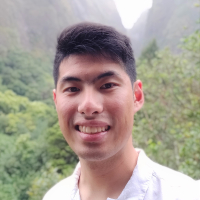
Alec Cao
Alec completed his undergraduate studies at UC Santa Barbara. He began in research working on a collaboration between Professors David Weld and Ania Jayich, constructing a UHV apparatus for studying surface decoherence of nitrogen vacancy centers. He then transitioned to the Weld lab’s ultracold lithium-7 apparatus, investigating transport dynamics and many-body chaos in Floquet lattice systems. After graduating, Alec spent a year at the University of Cambridge as a Churchill scholar in Professor Zoran Hadzibabic’s group; there he probed the properties of a uniform Bose polaron gas using potassium-39 trapped in an optical box. Alec is excited to join the strontium experiment and is looking forward to exploring applications of the platform in quantum metrology and simulation.
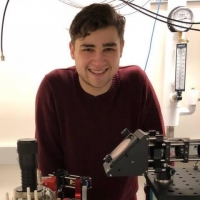
William Eckner
Will joined the Kaufman Group after completing his undergraduate studies at Yale University, where he graduated as a physics major. Along the way, he pursued his interests in biophysics, complex mathematical systems, and scientific research that can make a positive difference in people’s lives by studying computational neuroscience with Assistant Professor of Psychiatry and Physics John Murray. In the Murray Lab, Will studied organizing principles for gene expression in human cortex, specifically genes thought to relate to brain function or neuropsychiatric diseases, such as schizophrenia. Will subsequently discovered in an advanced lab course that he enjoyed constructing tabletop AMO physics experiments, and began working with Assistant Professor of Physics Nir Navon on a project aimed at creating a potassium BEC. With Professor Navon, he learned the fundamentals of getting an AMO experiment up and running from just a clear optics table. Will is excited to be in the Kaufman Group, where he hopes to master the art and science of AMO experiment, and more generally learn as much new physics as possible.

Joanna Lis
Joanna's journey to Kaufman's group took her through many countries and research disciplines. Joanna completed her undergraduate studies at University College London, UK. There her first research experience was with the biophysics group where, with Atomic Force Microscopy, she investigated DNA strands equilibration in 2D. With Professor Gaetana Laricchia Joanna completed her Master’s thesis on "Positronium production and scattering". She analysed the energy and angular dependence of the formation of this particle in neon gas, culminating in a proposal for increasing the efficiency of positronium production. At Okinawa, Japan she worked on whispering-gallery-mode resonators, where the motivation was to use their mechanical vibrations as nanoparticle sensors. Inspired by the potential of AMO table top-based experiments, Joanna joined the Ultracold Fermi Gas Group at Laboratoire Kastler Brossel, Paris, France. There she designed and constructed an objective to image lithium atoms and helped to engineeran all-optical homogeneous trap for these atoms. In Kaufman's group,Joanna will build a new tweezer experiment, this time with Yb Rydberg atoms, that aims to exploit the many-body interactions for quantum computation and simulation purposes.
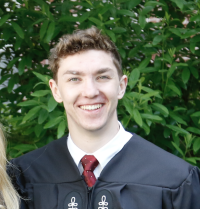
Theo Lukin Yelin
Theo joined the Kaufman group after completing a degree in Physics and Computer Science at Harvard University. After taking a year to work in Cybersecurity research and development after graduating, he decided fighting fundamental forces of nature was more fun than fighting hackers. During his undergraduate studies, he worked with professor Markus Greiner and the Atom Array lab on his thesis project to use a combination of AOMs and SLMs to enable ultra-fast phase-stable pattern generation for laser light. As part of this, he also developed novel algorithms for generating phase-controlled holograms. After spending so much of his life working with Rubidium atoms, Theo is excited to add a proton (and electron) and join the Strontium experiment, to use his knowledge of optical control to help push the limits of quantum many body physics and metrology.
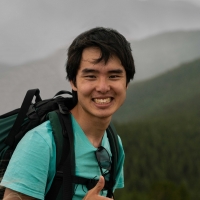
Aruku Senoo
Although “Aruku” means “walking” in Japanese, Aruku keeps running to pursue further understanding and harnessing the quantum mechanical world. In this way, he found his passion for Atomic, Molecular, and Optical Physics (AMO) in the Takahashi laboratory at Kyoto University, Japan, where he accumulated AMO and laser experiences. While he visited the University of Washington as an exchange student, he developed a ULE cavity system for the Ytterbium clock transition laser in the Gupta group. After coming back to Kyoto in 2020, he did theoretical research relating to cold atoms. Then, for his senior research, he joined the Ytterbium Quantum Gas Microscope (QGM) group in the Takahashi lab, where he observed site-resolved images of atoms and developed a DMD system for the QGM. For his Ph.D. research in the Kaufman lab, he is excited to pursue the possibility of the Ytterbium tweezer array for the applications of Quantum information and metrology
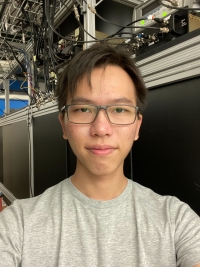
Ting You Tan
Ting You joined the Regal-Kaufman cryo-lab after completing his undergrad studies at the National University of Singapore. His love for atomic physics developed after spending a year in the group of Professor Christian Kurtsiefer. After learning the ropes of AMO physics experiments, he joined the group of Assistant Professor Travis Nicholson. For his honors project, Ting You helped to build the first Magneto-optical trap of Indium. Ting You will now help to construct a cryogenic Rydberg atom array experiment, exploring new physics with excitement.
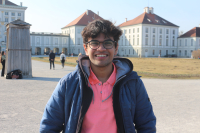
Gaurav Vaidya
Gaurav completed his undergraduate studies at the Indian Institute of Technology Madras. Here, he had his first encounter with quantum error correction, working with Prof. Mandayam to develop circuit models for channel-adapted error-correcting codes. Later, he moved on to exploring quantum synchronization in driven-dissipative systems with a former JILAn Dr. Athreya Shankar. He then moved on to work in the Preiss group at MPQ in Garching, where he fell in love with experimental AMO science and helped set up a 2D MOT for a new apparatus. For his master's thesis, Gaurav studied entangling gates between the polarization and OAM modes of photons in the Sivaramakrishnan group at IIT Madras. Now, Gaurav is thrilled to be a part of the Kaufman lab to work toward realizing fault-tolerant qubits and exploring avenues in quantum simulation with Yb Rydberg atoms.
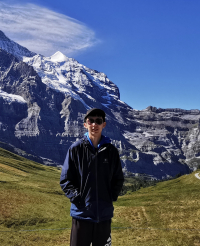
Kaizhao Wang
Kaizhao rejoined the group as a graduate student after he finished his master's degree in Quantum Engineering at ETH Zurich and bachelor's degree at Tsinghua University in Beijing. His interest in quantum information processing started when he was a visiting student at Oxford during his bachelor's degree. After returning to Beijing, he joined the group of Prof. Kihwan Kim for a theoretical project searching for fast multi-qubit gates for trapped-ions systems. During his master's degree, he visited the Kaufman group as an intern, working on a method to stabilize laser pulse area in fast pulses. In his thesis in Prof. Jonathan Home’s group at ETH, he designed and built a test setup to individually address atoms trapped in optical tweezer arrays. Now at JILA, he will work on a brand new cryogenic Lithium quantum gas microscope in collaboration with Prof. Cindy Regal.
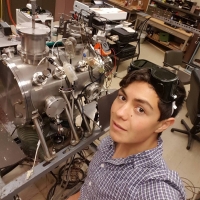
Aaron Young
Aaron was once a film major at Wesleyan university, but, after realizing there were far too many photons involved in film, turned his focus to photonics and quantum optics. He worked briefly in the molecular photophysics lab at Wesleyan, studying the dynamics of laser induced breakdown in water, before transferring to Caltech. There, he completed a senior thesis under Professor Oskar Painter titled "Hybrid Electromechanical Qubits as Quantum Memory". This work involved the design of a hybrid quantum device containing a transmon qubit and nano-beam mechanical resonator that aimed to coherently transfer the state of the qubit to the long-lived phononic modes of the mechanical resonator. Working with individual qubits left Aaron excited by the prospect of coherent control over many-body quantum systems, particularly in the contexts of quantum simulation and the study of novel topological phases of matter. As a result, Aaron joined the Kaufman group as a graduate student, helping to build a new experiment that controls and reads out systems of many alkaline-earth atoms by combining the techniques of optical tweezers, precision spectroscopy, and quantum gas microscopy.



